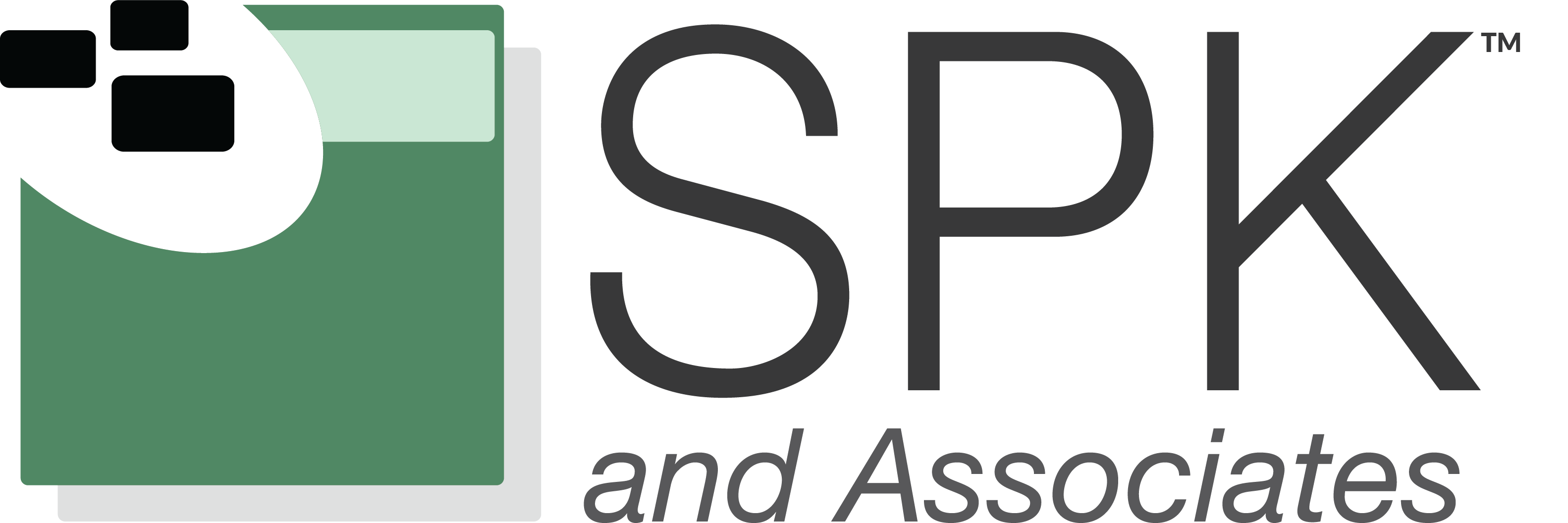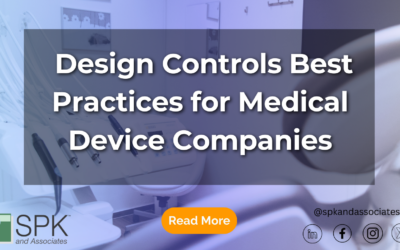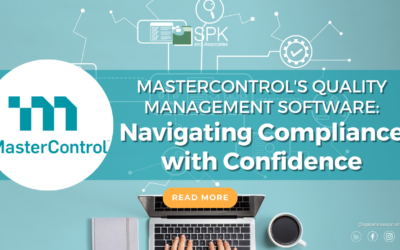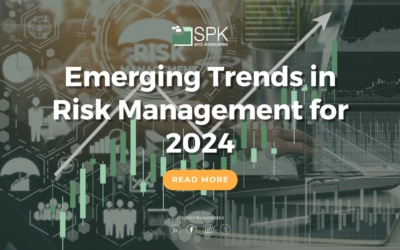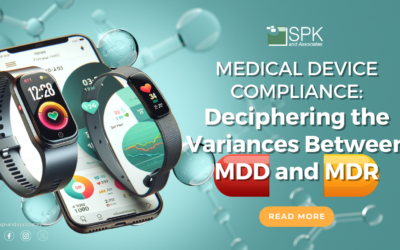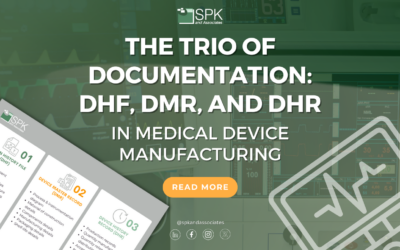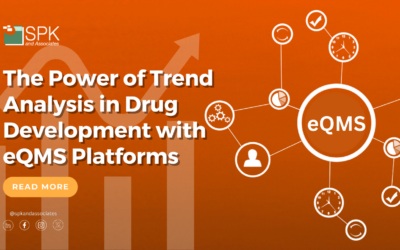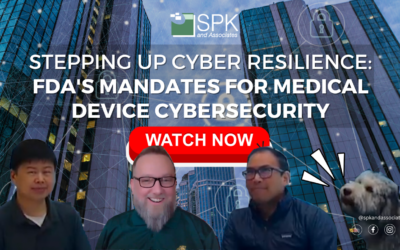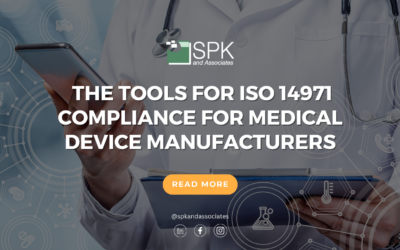Ensuring regulatory compliance and fostering trust in products are paramount for medical device manufacturers. The FDA, European Competent Authority, and Health Canada closely oversee design, development, and manufacturing for patient safety and efficacy....
Medical Device Engineering
Shifting from FDA 21 CFR Part 820 to ISO 13485
In this Vlog, Chris McHale, Co-founder, and CEO of SPK and Associates is joined by Carlos Almeida, Vice President of Engineering. Together, they’re discussing FDA compliance and the recent shifts impacting medical device companies. Topics for discussion include...
MasterControl’s Quality Management Software: Navigating Compliance with Confidence
Looking for a great out-of-the-box solution for a Quality Management Systems (QMS) that exceeds the compliance requirements for FDA? MasterControl could be a good option for you. It even includes the stringent guidelines outlined in 21 CFR Part 820. Let’s take a...
Emerging Trends in Risk Management for 2024
There is a paramount importance to staying ahead of new risks. After all, more and more crop up each day as technology and processes change. So, in this blog post we’re exploring the 2024 trends for risk management.Why Manage Risk? It sounds like a simple question...
Medical Device Compliance: Deciphering the Variances Between MDD and MDR
Back in 1993, the concept of IoT, fitness tracking apps or computerized surgical equipment sounded like something of Star Trek. But in 2023, tech is everywhere - and our medical devices have evolved for the better due to this. However, with evolution, also comes the...
The Trio of Documentation: DHF, DMR, and DHR in Medical Device Manufacturing
The FDA plays a pivotal role, setting the gold standard for regulatory oversight. Manufacturers must meticulously adhere to FDA regulations, such as the Quality System Regulation (QSR) under 21 CFR Part 820, governing key aspects like design controls, production...
The Power of Trend Analysis in Drug Development with eQMS Platforms
There is an intrinsic value of identifying trends in data for medtech manufacturers. Yes, the prospect of avoiding scrutiny from federal auditors is a tangible benefit. However, the true motivation for proactive medical device trend analysis lies in its power to...
Medical Device Trends For 2024
2020 was a wild ride, especially for the medical device world. The pandemic shook things up, making everyone scramble to adjust to a new way of doing things. Now, four years later as we peek into 2024, the medical device scene is still changing. This blog post will...
Stepping Up Cyber Resilience: FDA’s Mandates for Medical Device Cybersecurity
Today, we're covering an important discussion led by our Vice President of Sales and Marketing, Michael Roberts to discuss the intersection of FDA regulations and medical device cybersecurity. You can watch the video to get insights in to the full discussion, or check...
The Tools For ISO 14971 Compliance for Medical Device Manufacturers
The journey from concept to market-ready medical device is no easy feat. The regulatory economy, development and legislation is intricate. Understandably, compliance with standards is non-negotiable to ensure the safety and efficacy of medical devices. One such...
Highlights from MasterControl Summit 2023
The MasterControl Summit 2023 was an event serving as a hub for professionals, experts, and thought leaders in quality management and regulatory compliance. It offers a platform for knowledge sharing, industry trends, innovation and best practices. Additionally it...
Insights from Greenlight Guru’s 2023 MedTech Industry Benchmark Report
In a year of unexpected twists, the medical technology (MedTech) industry finds itself amidst shifting sands. So, Greenlight Guru’s 2023 MedTech Industry Benchmark Report is a treasure trove of insights into MedTech trends and the landscape. Let's deep dive into some...

